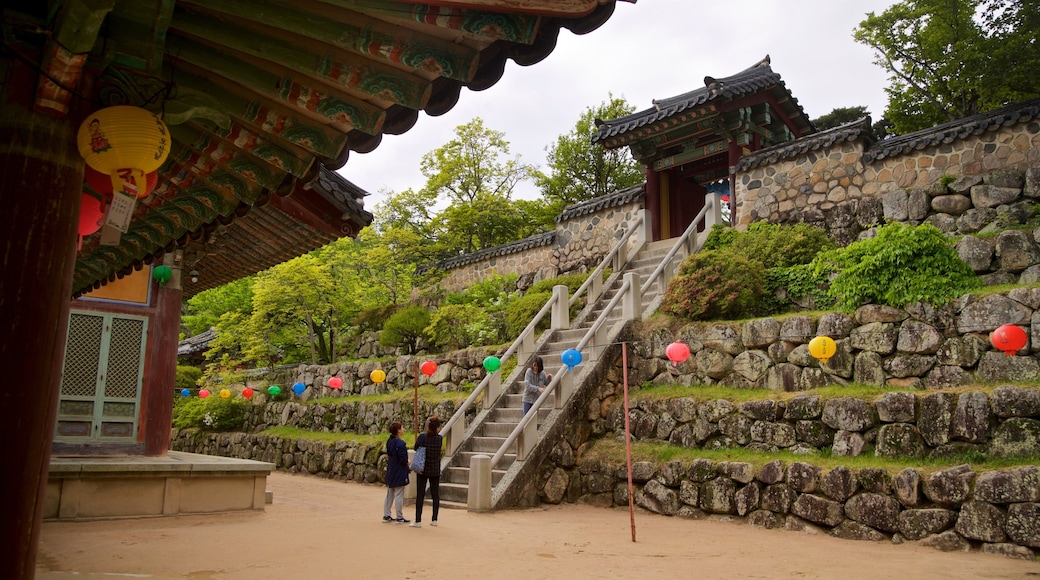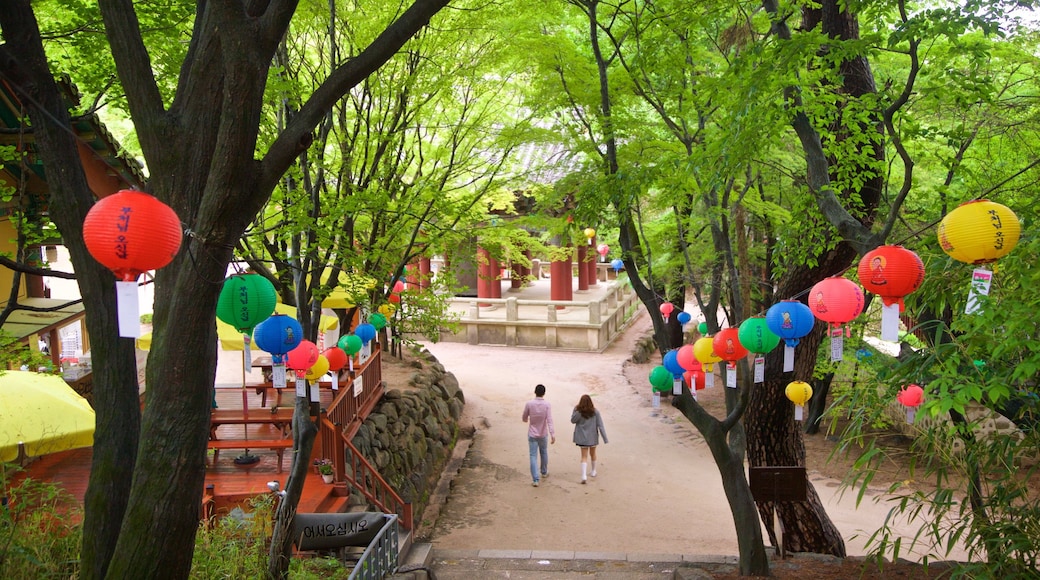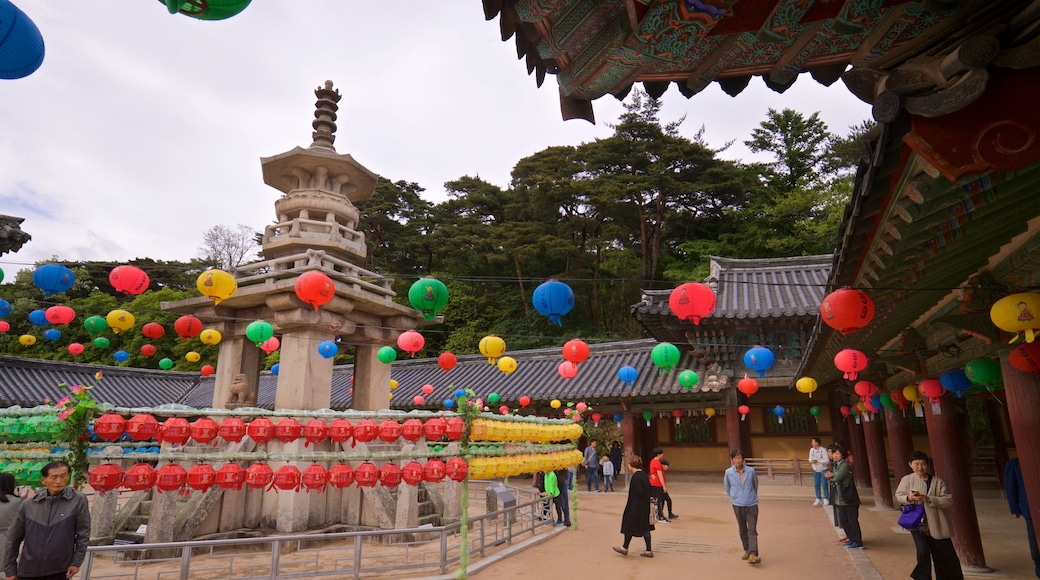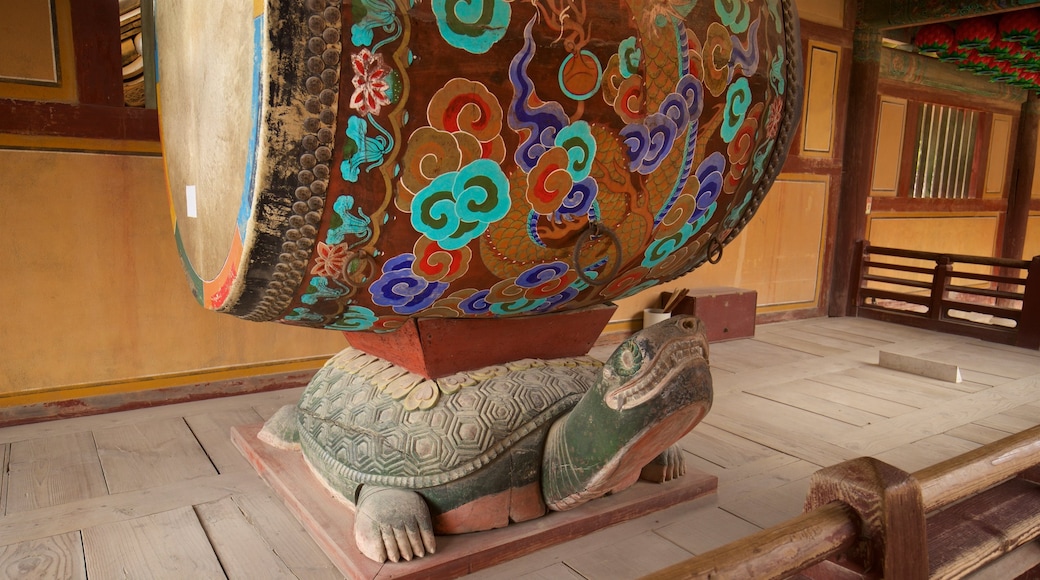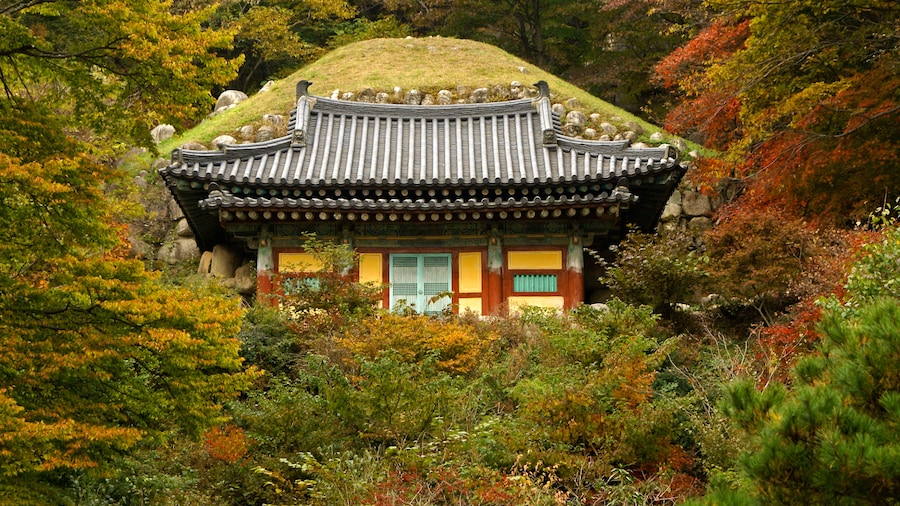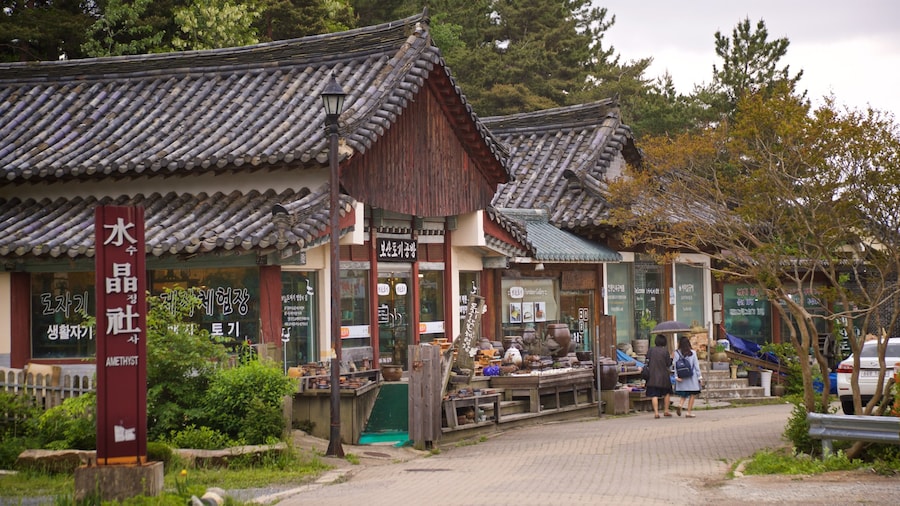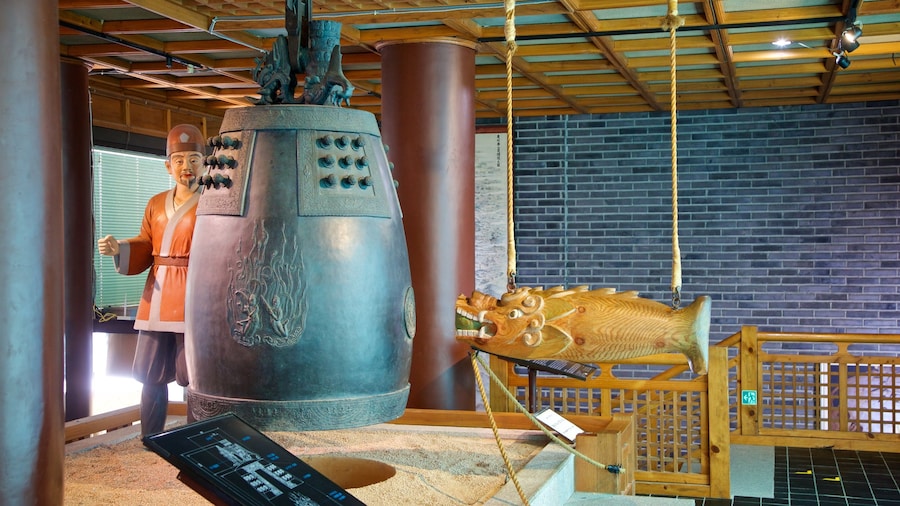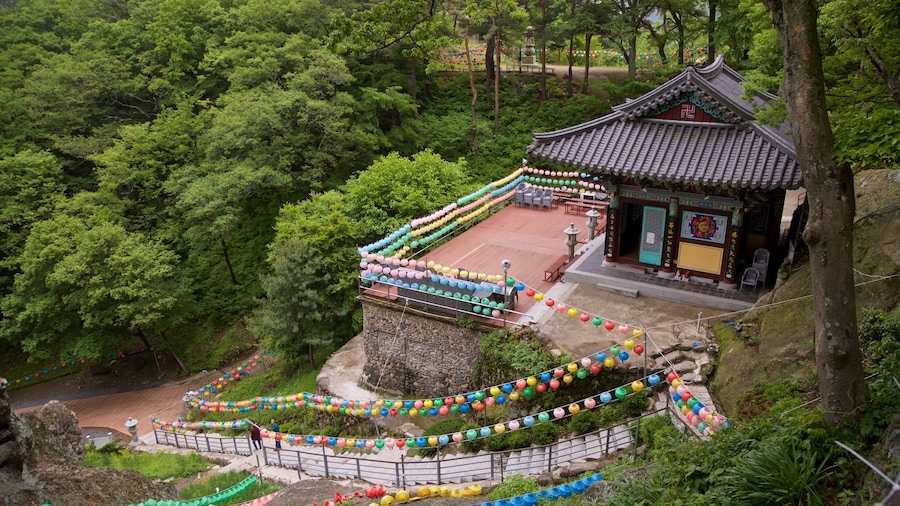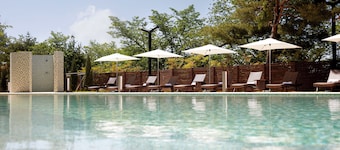Venture to the forested slopes of Mount Toham to enjoy its picturesque gardens and learn about this highly significant complex dating back to the ancient Silla Kingdom.
Bulguksa is the main temple of the 11th district of the Jogye Order of Korean Buddhism. Even if you are not into Buddhist architecture, it’s worth visiting Bulguk-sa because of its beautiful gardens with arched stone bridges, lotus ponds and drooping willow trees.
The Bulguk-sa complex features on the UNESCO World Heritage List because it was constructed in the early 6th century and the ancient temple roof and ceiling carvings have been well preserved. What’s more, the Bulguk Temple Complex is home to not just one, but seven National Treasures of South Korea. The nearby Seokguram Grotto is also UNESCO-listed as it is considered a masterpiece of Buddhist art.
The seven national treasures within the complex include the Dabotap and Seokgatap stone pagodas, Cheongungyo (Blue Cloud Bridge), and two precious Buddha statues.
The temple’s halls are the Birojeon (the Vairocana Buddha Hall), the main temple hall named Daeungjeon (Hall of Great Enlightenment), and Geungnakjeon (Hall of Supreme Bliss). With their slanting tiled roofs and ornately carved features, the halls are very photogenic, but because of the sacred relics inside, photography is only allowed outside.
Bulguksa is in Jinheon-dong, which is on the outskirts of Gyeongju city. You should allow a day to visit by bus from Seoul’s Gyeongju Station or Intercity Bus Terminal, or just half a day if on a tour or going by taxi.
Because Bulguksa is still a working Buddhist temple today, you may not be able to enter the halls at all times, so get local advice before you head up the mountain. There is an entrance fee to enter the temple complex.
The Seokguram Grotto is just 2.5 miles (4 kilometers) to the east and you can hike there or take another bus that leaves every half hour. Be aware that the alcove that contains the sacred stone Buddha is only small and that photography isn’t permitted inside here either. Some come here just for the views of the East Sea from this excellent vantage point on Mount Toham, so still bring your camera along.
